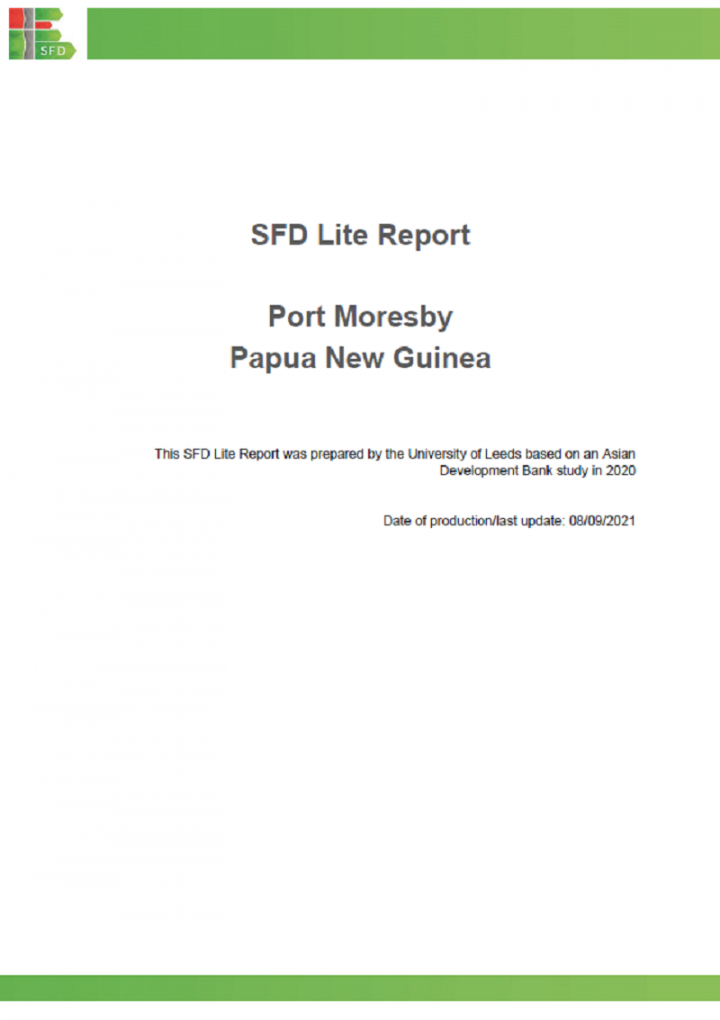
Published in: 2022
Pages: 10
Publisher:
University of Leeds
Author:
University of Leeds
Uploaded by:
SuSanA Admin
1055 Views
30 Downloads
This SFD covers the administrative “National Capital District” of Port Moresby, the capital city of Papua New Guinea. According to the 2011 Census, the population was 364,125 and the population growth rate was 3.3%. The predicted population in 2020 was 503,795, no further census data are available. This is likely to be around 65,800 households. Most of the population growth is within the inland suburbs of Gerehu, Morata, Gordena and Tokara, and more recently on the peninsula near the port.
The service outcomes indicate that only 11% of excreta are safely managed. An estimated 89% of the sanitation waste is not safely managed. Importantly, over half of this is from pit latrines which are not emptied but abandoned unsafely when full. These facilities are rarely covered safely but left open and therefore present a significant hazard. The balance of the unsafely managed sanitation is from faecal sludge, supernatant and wastewater not delivered to treatment; wastewater and faecal sludge delivered to treatment but not treated; and 4% is from open defecation.
Bibliographic information
University of Leeds (2022). SFD Lite Report – Port Moresby, Papua New Guinea. University of Leeds
Filter tags
East Asia & Pacific English Politicians and local decision makers Practitioners SFD Report














